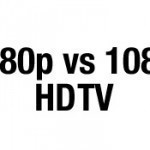As it sounds, a projection television, or more commonly a "rear-projection" TV work by projecting an image from behind the screen itself. Currently, there are three main types of technology used in rear-projection TV's: CRT, LCD, and DLP. Each uses a combination of projection devices, magnification lenses, mirrors, and screens to produce the image seen. However, each takes an alternate approach and each has its own sets of advantages and disadvantages. CRT CRT, or Cathode Ray Tube, technology is the most basic and has been around the longest of rear-projection Read More
How to Record a Show from DVR to a Computer
Many people these days have a DVR attached to their television set that allows them to pause, record, and playback TV shows and movies whenever they want. While this provides consumers with much-appreciated accessibility and flexibility, a growing trend worldwide is to connect a DVR to a computer in order to watch TV shows and movies on a desktop computer or take them on the go by connecting the DVR to a laptop. In this article, we will show you several methods that allow you to record shows from your Read More
Apple TV Alternatives

Apple TV is one of the available options for streaming and Internet based entertainment for the television. It has an extensive library of content when paired with Apple iTunes. Although Apple TV can be an affordable option, the device has many limitations that really reduces it to a basic streaming device. This device is not the only one of its kind to provide streaming and entertainment capabilities. There are many options to choose from with varying degrees of quality and selection. The following are some of the best digital media Read More
How an LCD TV Works

From the wordings of the name, an LCD TV is a short form of Liquid Crystal Display Television. What is presented in an LCD TV to make it work the way we see it is founded on the special effects of substances of light and liquid crystals acting on each other. These are brought together through a technical process known as Thin Film Transistor. Keep in mind that this process has witnessed a lot of innovations over the years to bring the LCD TV to what we have today. The Read More
How to Build a Home Theater
The concept of a home theater is excellent if you want to enjoy the cinema experience from the comfort and convenience of your home. If you are looking to build your own home theater, here are some recommendations. Choose a Room The size and location of your room will have definite consequences on how and when you enjoy your home theater. For instance, make sure your room is big enough so that you can install a large screen TV, surround sound speakers and furniture for you and your friends to Read More
Macrovision
Macrovision is a company that sells copy protection products. The company's first product was a copy protection system for VHS tapes, which was also known as Macrovision. For a detailed look at that system, read Antti Paarlahti's Macrovision FAQ. The Macrovision copy protection system was later extended to DVDs. Macrovision is designed to prevent DVDs from being copied to tape. How Macrovision Works Macrovision works by making modifications to the video signal, including: Automatic Gain Control: Macrovision inserts pulses into the vertical blanking signal. This confuses the synchronization and automatic-recording-level Read More
S-Video

S-Video is an abbreviation for Separate Video and is also known as the Y/C. it is an analogue video signal that carries the video data as two separate signals; these signals are luma (brightness) and chroma (color). The S-Video can be thus contrasted with composite video, which carries picture information as a single component, albeit of a poor quality. Another signal is called component video and this one carries picture components in three separate signals, one luma and two chroma components. Basically, S-video is used to transmitting a television signal Read More
How a Television Antenna Works
"Low Tech" is the best way to describe a basic television antenna. Television antennas feature a series of elements cut to exact lengths which are designed to receive a compatible frequency from a transmitted television signal. Each element has a pair of metal rods (primarily aluminum based) extending from a boom. The key difference between various brands of television antenna is based on the quality of construction and how well anodized the metal is. As the metal oxidizes and the rivets rust, the active elements tend to lose contact. When Read More
HDCP (High-Bandwidth Digital Content Protection)
High-Bandwidth Digital Content Protection, also known as HDCP, is a newer form of Digital Rights Management (DRM) that was designed to control digital video and audio content. The technology was originally created by Intel to ensure that digital audio and video travelling across a Digital Video Interface (DVI) or High-Definition Multimedia Interface (HDMI) would follow the various guidelines put forth by the Digital Content Protection group. What Is Required Of An HDCP Capable Device In order for a product to claim that it is HDCP capable, it must have a Read More
1080p vs. 1080i

Most TV buyers are looking for the highest quality picture possible. For those shopping for a TV there is a controversy brewing about which is better 1080p or 1080i. However, the truth of the matter is that for most people both of these formats will deliver the same quality picture. Here is why. 1080i and 1080p Both 1080i and 1080p deliver the same pixel resolution. The resolution is 1,920 pixels across the display screen by 1,080 pixels down the display screen. Since both formats offer the same resolution, the only Read More


Share on: